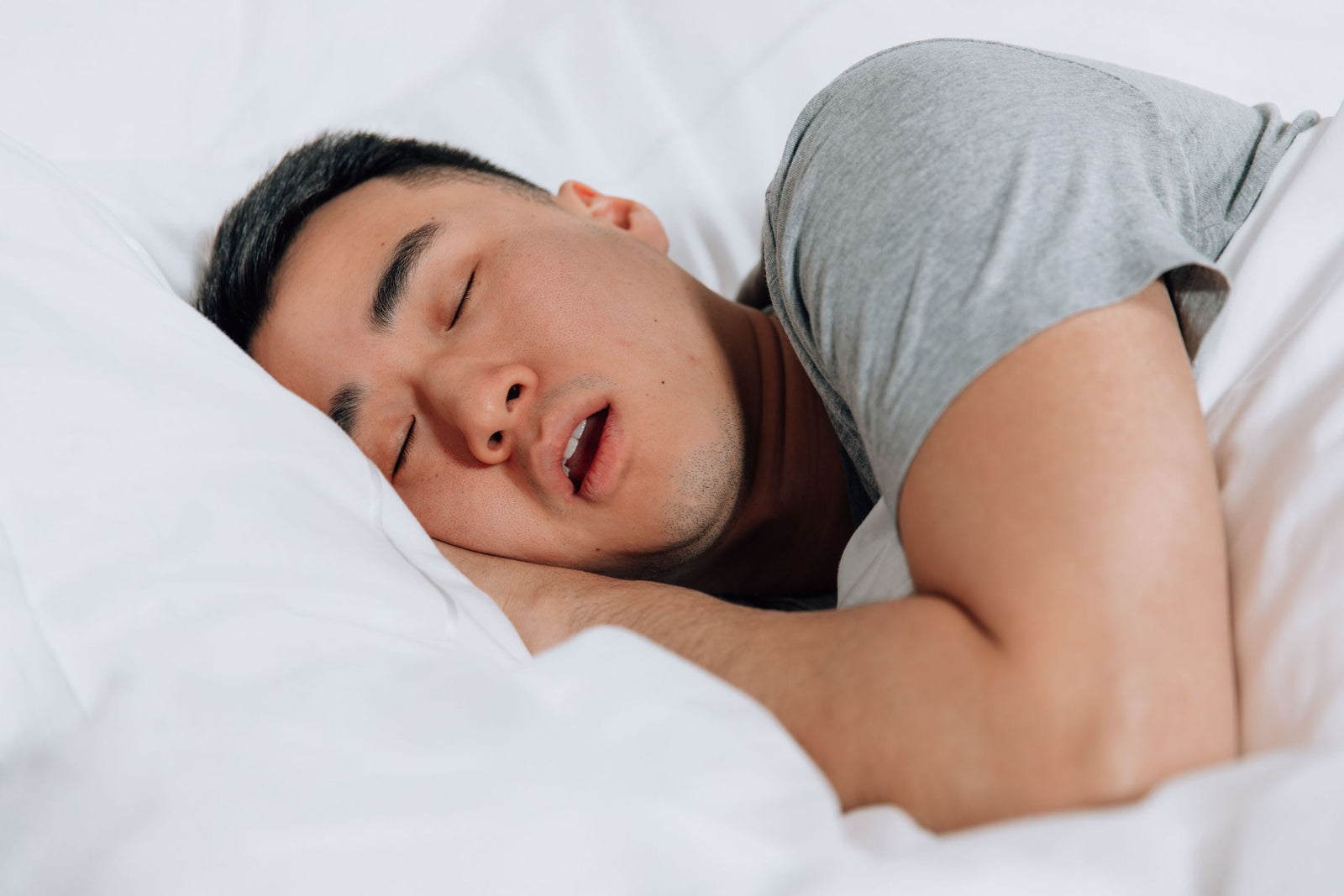Something as automatic as breathing doesn’t need to be delved into, right? Wrong. The way you breathe affects the way your entire body functions.
If you breathe through your mouth, you’re harming your body, mind, and health. That’s why it’s so vital to learn how to stop being a mouth breather.
Before we break down how to make the switch from mouth breathing to nasal breathing, let’s first take a closer look at why mouth breathing is so harmful.
Mouth Breathing: What’s So Bad About It?
One of the largest issues with mouth breathing is that it is a leading cause of snoring! When you breathe through your mouth at night, you’re actually overbreathing.
Overbreathing forces a larger amount of air to move through your airways than necessary. Relaxed tissues in your airway then vibrate, causing snoring. By closing your mouth, you can usually eliminate snoring altogether, meaning improved sleep quality.
Mouth breathing can also cause issues during the daytime. First off, the nose acts as a natural filter and humidifier as your nose hairs filter pollen and dust all while adding moisture to your breath. The mouth, on the other hand, doesn’t offer this same protection. This is harder on the body and lungs.
Beyond that, mouth breathing can lead to an array of oral health complications. Open mouth breathing leads to cavities, gum disease, halitosis (bad breath), dry mouth, and much more.

Saliva is like the shield of the mouth. It’s responsible for protecting the teeth and gums from foreign particles. When you mouth breathe, saliva dries out within the mouth, leaving the teeth and gums defenceless.
Now that we know why mouth breathing is so harmful, let's discuss why nasal breathing is essential.
Why Nasal Breathing is Best
There are many benefits to nasal breathing aside from reducing snoring at night. Nasal breathing helps to lubricate the nostrils, add moisture to the sinuses and lungs, deliver appropriate oxygenation, and more.

Nasal breathing has also been shown to improve brain function, heart health, and blood pressure. Why? It's all thanks to a little known molecule called nitric oxide.
When you breathe through the nose, the body naturally produces nitric oxide, whereas the mouth does not. Nitric oxide is a phenomenal molecule and vasodilator that activates the parasympathetic nervous system, responsible for helping the body relax and decrease stress levels.
Nitric oxide also boosts the immune system, increases energy levels, and improves endurance during physical activity.
The good news is that once you start focusing on nasal breathing instead of mouth breathing, it will become an unconscious habit. Here’s how to stop being a mouth breather during the day and take advantage of all of the health benefits that nasal breathing provides:
How to Stop Mouth Breathing During The Day
Your tongue, at its core, is a muscle. Just like any other muscle in the body, it’s possible to strengthen and train it.
Proper tongue posture is essential for promoting nasal breathing and learning how to stop being a mouth breather.
So what does proper tongue positioning look like? Your tongue should never rest on the bottom of your mouth or directly against the teeth. Instead, the tongue should rest all the way up on the roof of the mouth.
@somnifix Tongue Posture 101 with Myofunctional Therapist Sarah Hornsby #airwayhealth #healthylifestyle #biohacking #nosebreathing via #youtube
♬ Resonance - Home
The tip of the tongue should rest just behind the teeth rather than pushing against them. After you adjust this posture, you may feel or see a shift in your chin or neck muscles.
How else can you stop being a mouth breather? Aside from checking your tongue posture throughout the day, you can work on reducing nasal congestion with Buteyko breathing.
Nasal congestion leads to mouth breathing. By keeping nasal passages clear, you’ll be able to breathe in and out of your nose with ease.
Named after Dr. Konstantin Palvovich Buteyko, Buteyko breathing encourages fluid to clear out of the nose and sinus cavity.
To practice Buteyko breathing exercises, begin with a brief inhale and exhale. Then, hold your nose closed with one hand and hold your breath. From there, nod your head up and down repeatedly until you have to take another breath.
Then, let go of your nose and inhale through the nose without opening your mouth. Take a 30-second break and repeat this process up to five times.

Now that we’ve covered how to stop mouth breathing during the day, let’s discuss how to stop being a mouth breather at night.
How to Stop Mouth Breathing at Night
The best way to stop mouth breathing while you’re asleep is to completely eliminate your ability to open your mouth altogether.
Mouth taping works by literally allowing you to tape your mouth shut to prevent mouth breathing. While it may sound peculiar, it helps to train the body to breathe through the nose during sleep, since it’s the only available way to breathe.

Better yet, if you’re a sleep apnea sufferer, you can even use mouth tape in combination with a CPAP machine so that you get the most out of your CPAP therapy.
Mouth taping during sleep is the easiest way to take in all of the health benefits of nasal breathing, all without a second thought or any added effort.
There’s just one thing to keep in mind: you can’t just settle for any tape you have lying around.
Stop Being a Mouth Breather For Good With SomniFix
Not all tape is suited for the skin. In fact, regular everyday tape can irritate the skin, causing rashes or irritation. Micropore tape can be useful, but it isn’t always best for those with sensitive skin or skin allergies.
SomniFix Mouth Strips are designed with sensitive skin in mind. They’re latex-free, gluten-free, and hypoallergenic. Our gel-like adhesive is so comfortable that you’ll forget you’re even wearing mouth tape, which can’t always be said for other forms of tape on the market. They even feature a filtered breathing vent for peace of mind, so you can sleep easy knowing that there is always a mouth breathing option available if necessary.

Long story short? If you’re trying to learn how to stop being a mouth breather, SomniFix Mouth Strips are your best line of defense at defeating your bad mouth breathing habit once and for all!



